Larger than Australia with its 8 million square kilometres, the Sahara has not always been the biggest hot desert on the planet. About 15,000 years ago, it was a green period brought about by a warming phase that had intensified evaporations from the top of the ocean and pushed the monsoons into the heart of the North African continent. The arid landscapes that we know today were then covered by large lakes and rich vegetation. Elephants were living there, as well as hippos, crocodiles and humans too. Those ones, as to immortalize this full of life period, have drawn paintings and engravings cut out of rock. These testimonies of the past are omnipresent in Tadrart Rouge. Indeed, this Sahara’s fragment is located in south-eastern Algeria and offers the vision of over 15,000 engravings to the brave who dare adventuring themselves into there. Over the sand dunes and rocky peaks, the traveller will discovers, in the same time as breathtaking landscapes, a touching testimony of the past.
The Tadrart Rouge, located on the Algerian south-east part
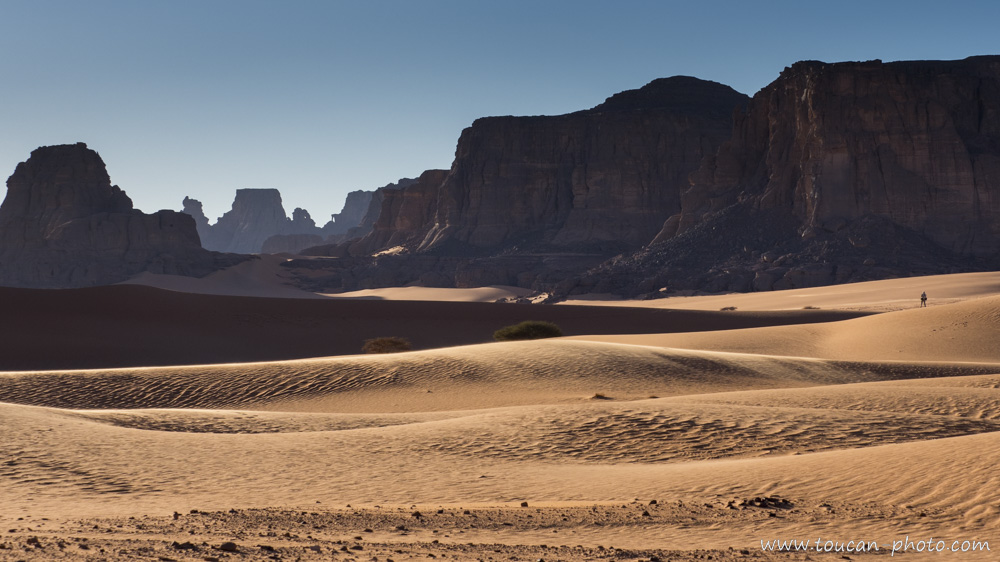 Sahara composition is about 20 % of sandy surfaces and about 80 % of rocky surfaces, mostly sedimentary rocks. The hiker on the right allows us to imagine the landscape scale.
Sahara composition is about 20 % of sandy surfaces and about 80 % of rocky surfaces, mostly sedimentary rocks. The hiker on the right allows us to imagine the landscape scale.
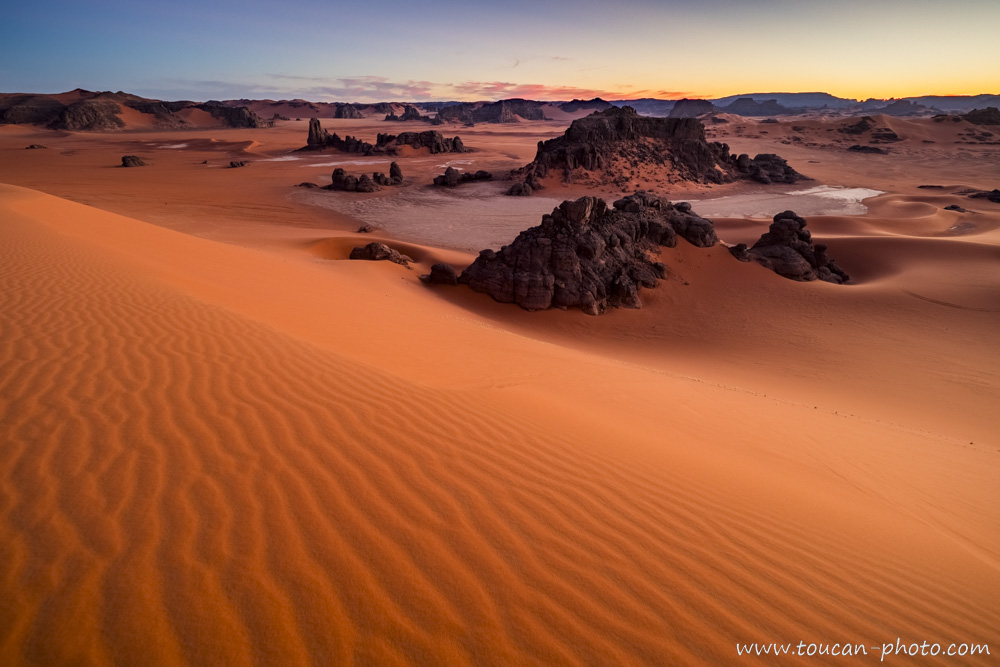 Tadrart Rouge overview
Tadrart Rouge overview
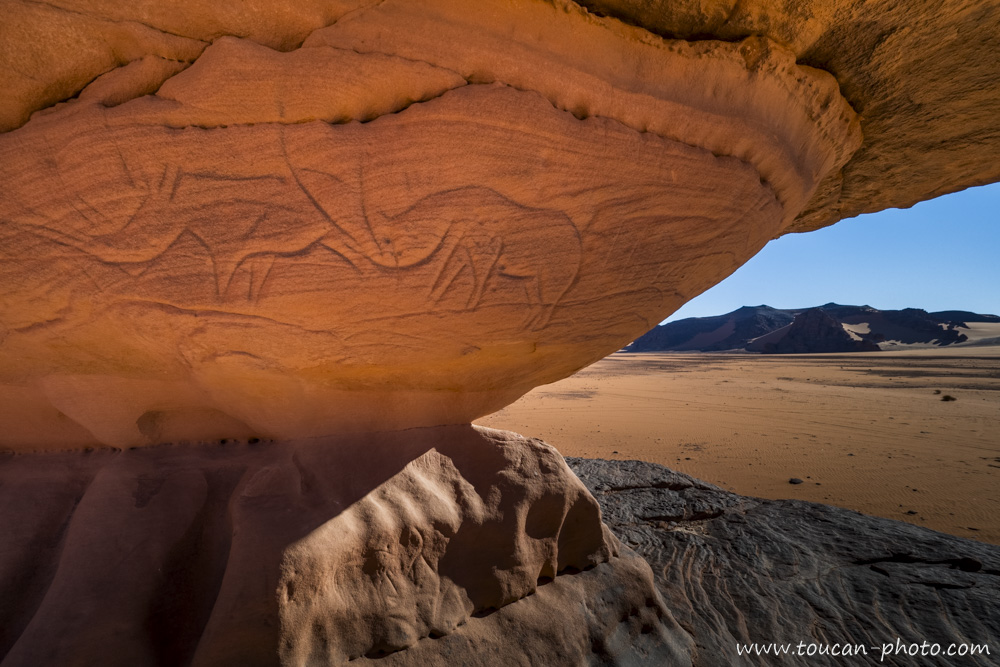 Here you can see one of the 15000 engravings that can be discovered into the Tadrart Rouge. The oldest ones are estimated to be about 12000 years old.
Here you can see one of the 15000 engravings that can be discovered into the Tadrart Rouge. The oldest ones are estimated to be about 12000 years old.
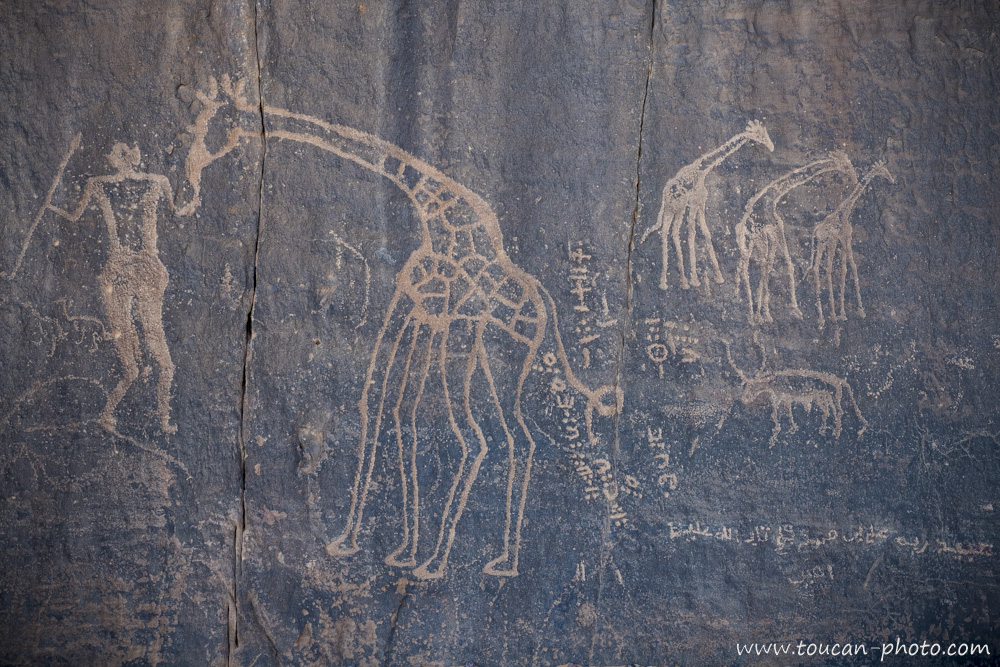 Another engraving, this time staging giraffes. The character on the left seems to be a hunter.
Another engraving, this time staging giraffes. The character on the left seems to be a hunter.
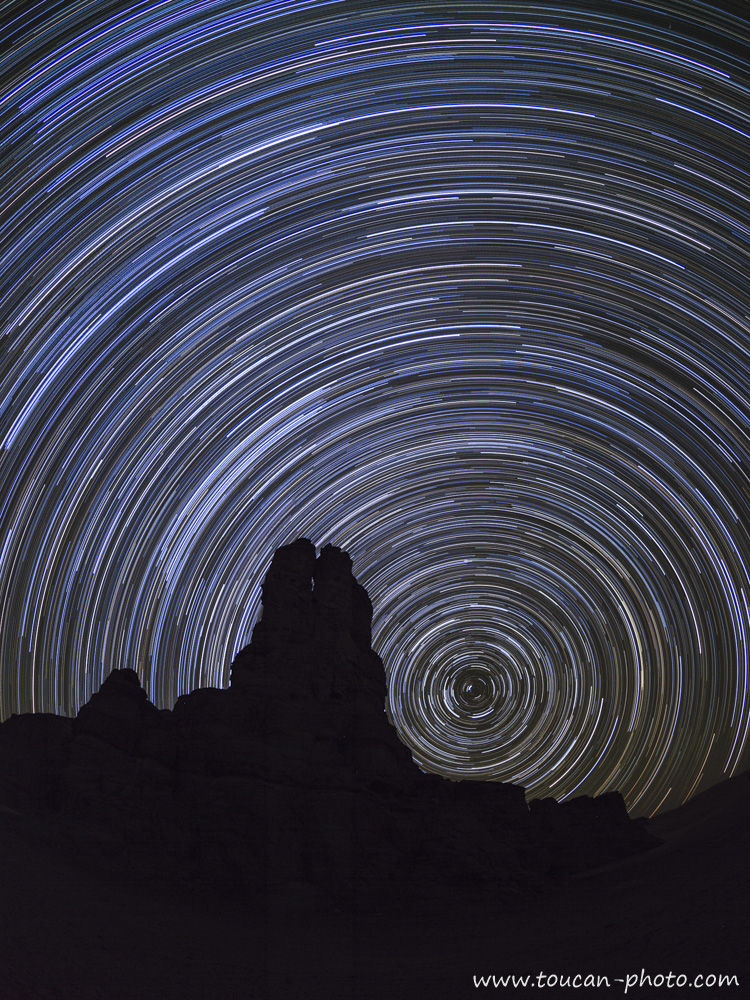 Night long exposure photography of “Moulnaga” peak, located in the heart of Tadrart Rouge. The 3 hours long exposure allowed the stars to trace these beautiful light full arabesques.
Night long exposure photography of “Moulnaga” peak, located in the heart of Tadrart Rouge. The 3 hours long exposure allowed the stars to trace these beautiful light full arabesques.
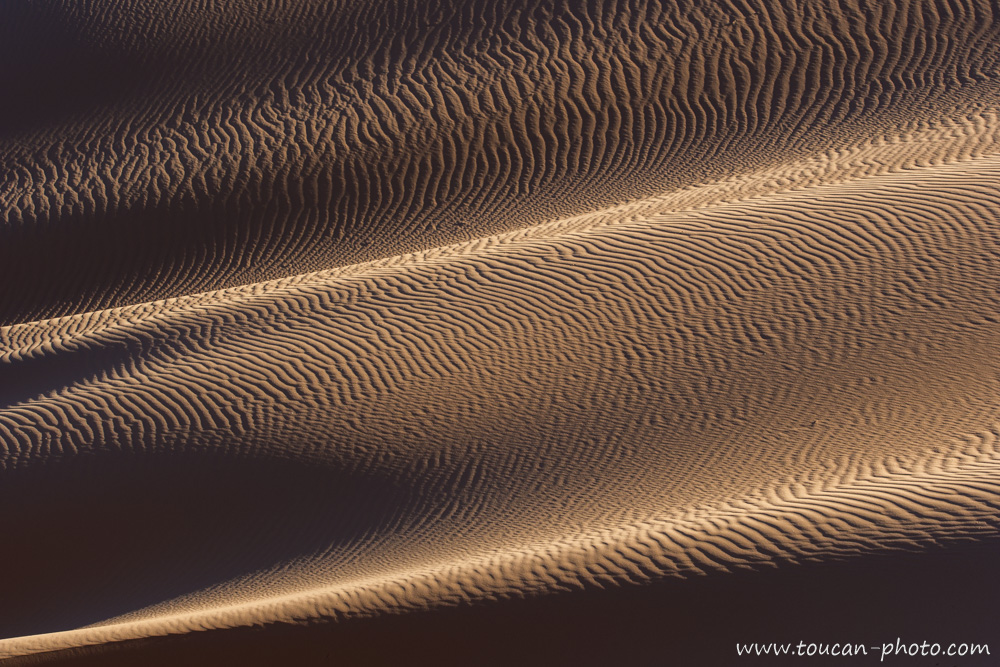 During the day, we can see another kind of arabesques: the ones drawn by the wind in the sand
During the day, we can see another kind of arabesques: the ones drawn by the wind in the sand
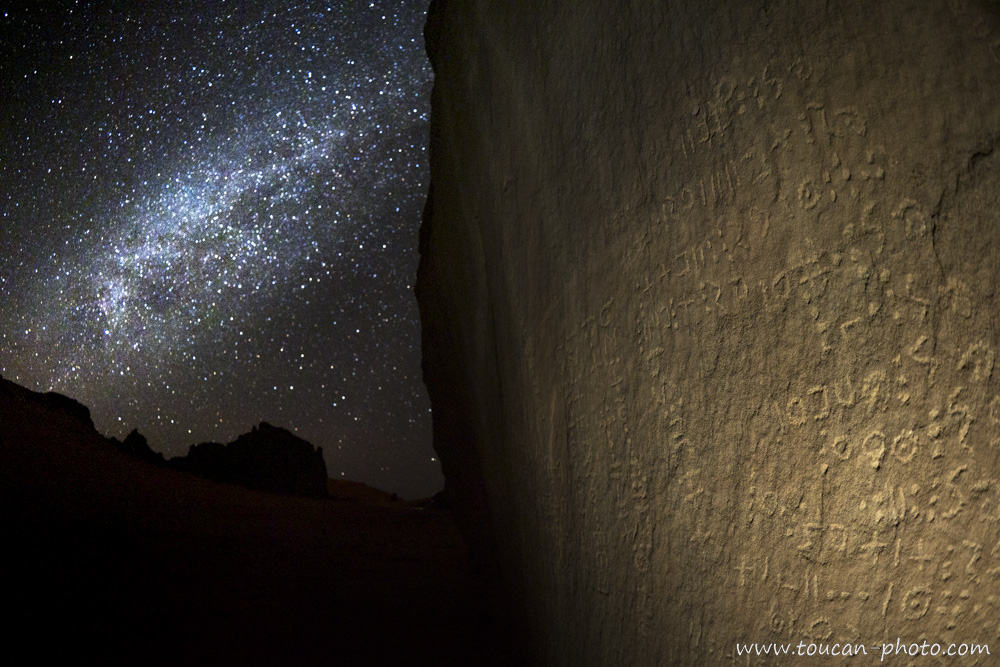 Tifinagh (“ⵜⴼⵏⵗ” or “ⵜⵉⴼⵉⵏⴰⵗ” in Tifinagh) is a Berber alphabet existing for about 6000 years. It can be found in many writings, like here on this rock photographed during the night with the Milky Way as background.
Tifinagh (“ⵜⴼⵏⵗ” or “ⵜⵉⴼⵉⵏⴰⵗ” in Tifinagh) is a Berber alphabet existing for about 6000 years. It can be found in many writings, like here on this rock photographed during the night with the Milky Way as background.
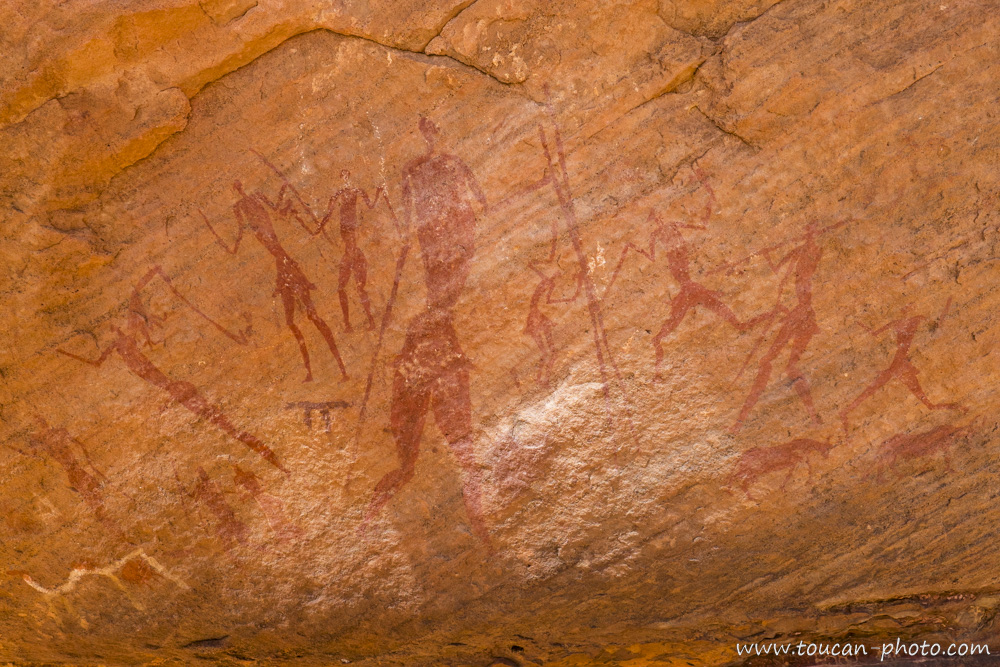 Additionally to the gravures, we can see many paintings directly on rock. Humans characters are staging in what seems to be daily life representation: dances, sings, hunts, etc.
Additionally to the gravures, we can see many paintings directly on rock. Humans characters are staging in what seems to be daily life representation: dances, sings, hunts, etc.
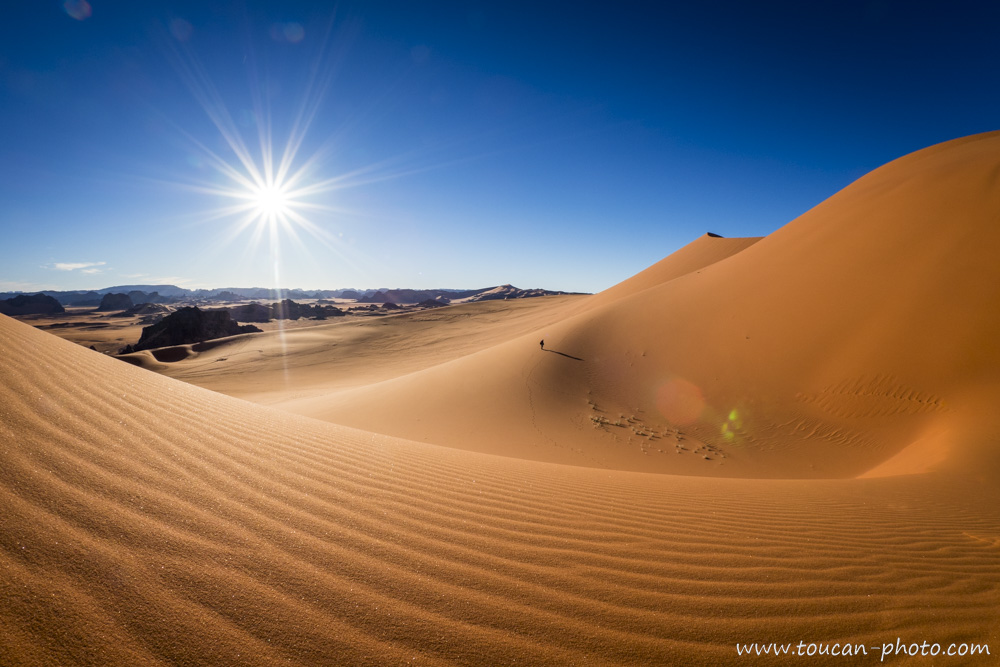 A lonely hiker in the desert
A lonely hiker in the desert
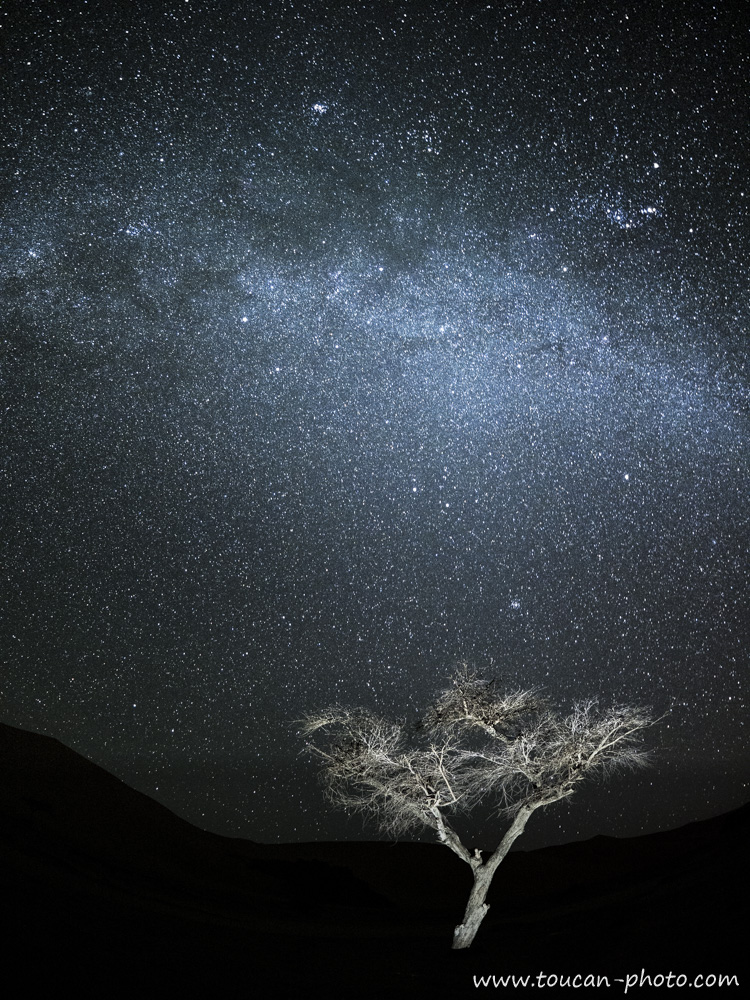 Milky Way photography with an Acacia forefront. The acacia’s roots can go into the ground on about 15 meters deep. Although it makes it very drought resistant, this tree remains quite rare in the Tadrart Rouge.
Milky Way photography with an Acacia forefront. The acacia’s roots can go into the ground on about 15 meters deep. Although it makes it very drought resistant, this tree remains quite rare in the Tadrart Rouge.
 Tadrart Rouge vastness. Behind the dark rock’s barrier, the Tadrart Rouge is extending to Libya, that can be saw in the background.
Tadrart Rouge vastness. Behind the dark rock’s barrier, the Tadrart Rouge is extending to Libya, that can be saw in the background.
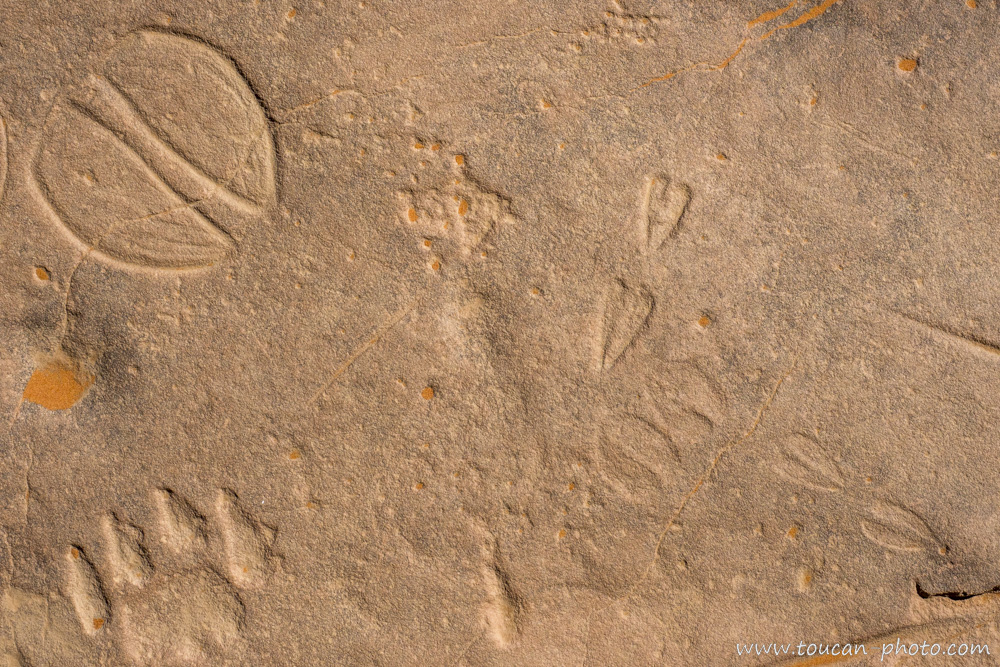 Engravings of animal footprints
Engravings of animal footprints
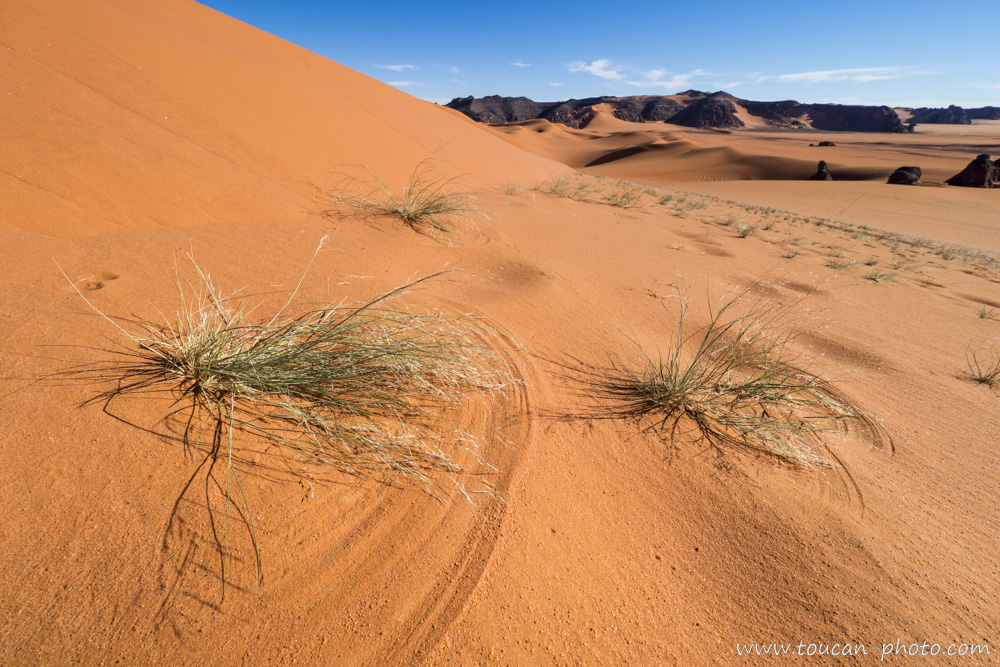 The wind also let some souvenirs of its passing. It models dunes and draw in the sand thanks to dry blades of grass.
The wind also let some souvenirs of its passing. It models dunes and draw in the sand thanks to dry blades of grass.
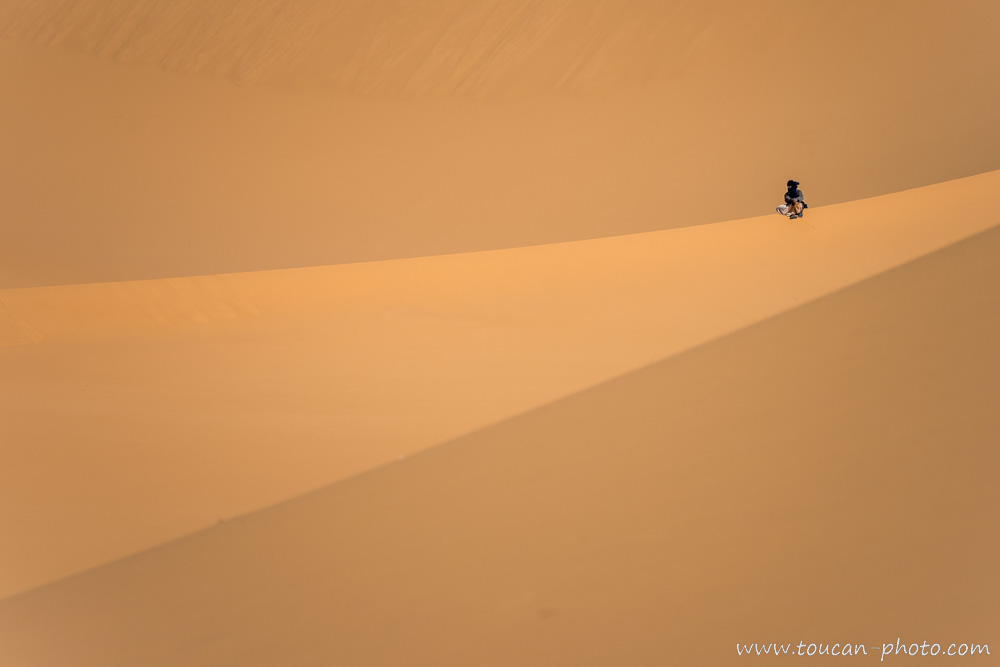 While some can spend many hours admiring the pared down lines of the desert…
While some can spend many hours admiring the pared down lines of the desert…
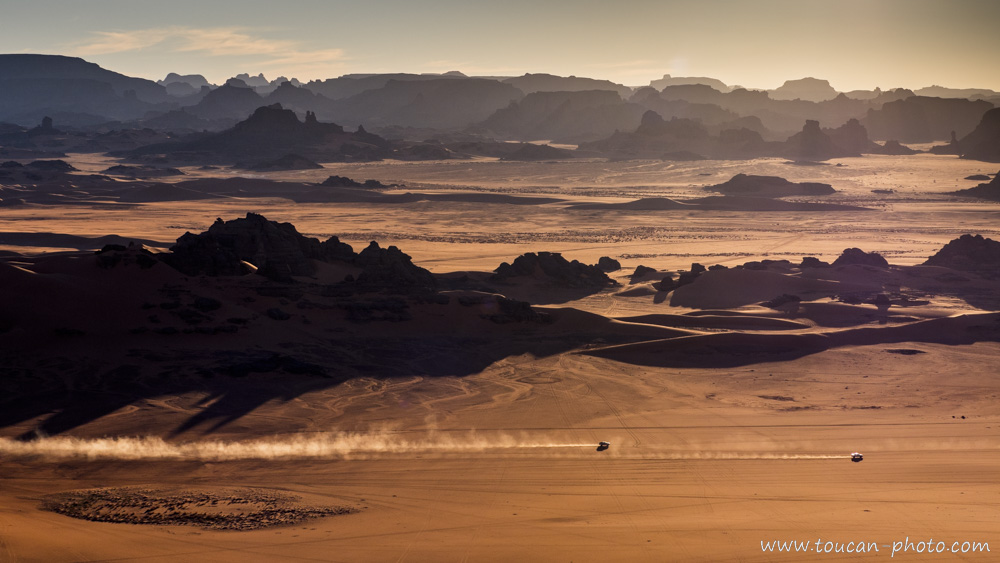 … Others choose to ride at full speed through Tadrart Rouge windings
… Others choose to ride at full speed through Tadrart Rouge windings
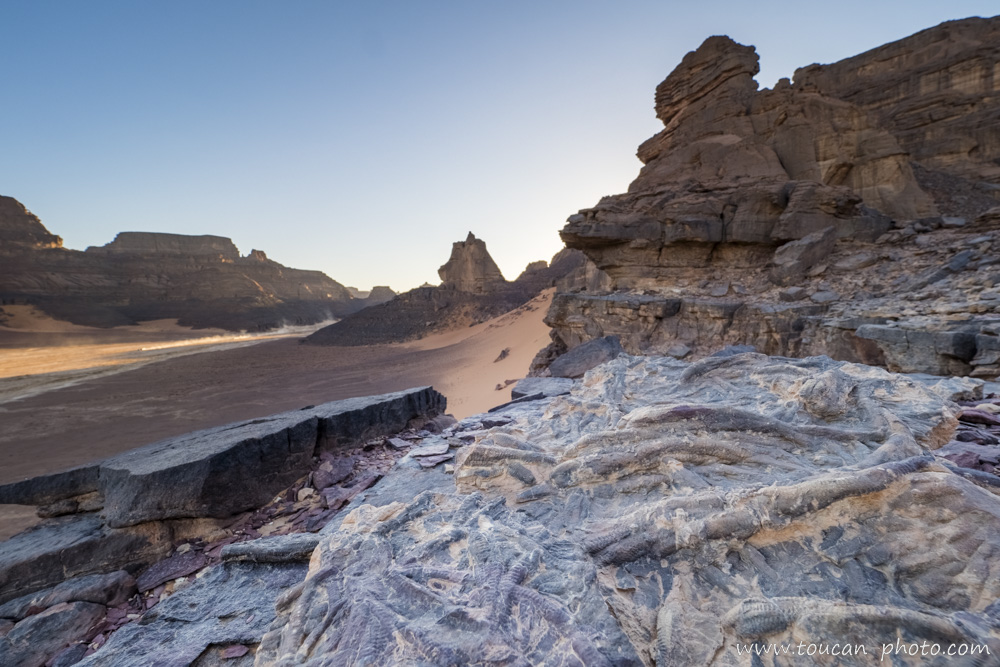 Those marines fossils remains that, once, water was here in abundance. Indeed, about 100 millions years ago, the sea was covering part of the Sahara.
Those marines fossils remains that, once, water was here in abundance. Indeed, about 100 millions years ago, the sea was covering part of the Sahara.
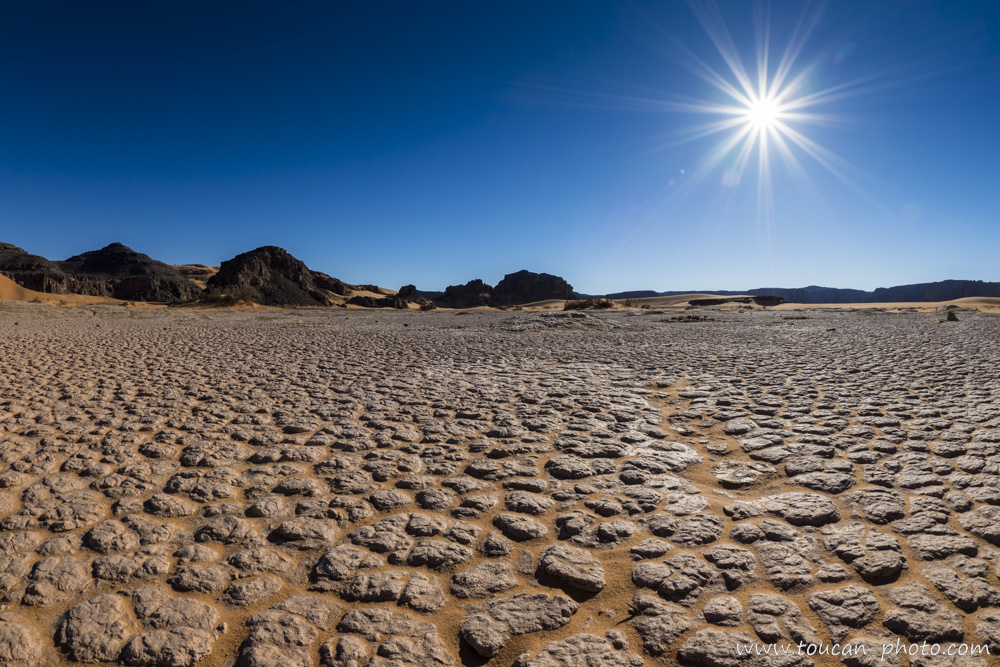 Burning sun over a dried up Guelta. The bawling form of the ground retains the water during the very rare rainfalls (about 18mm / year). The very few water will evaporate, letting this thin cracked clay crust.
Burning sun over a dried up Guelta. The bawling form of the ground retains the water during the very rare rainfalls (about 18mm / year). The very few water will evaporate, letting this thin cracked clay crust.
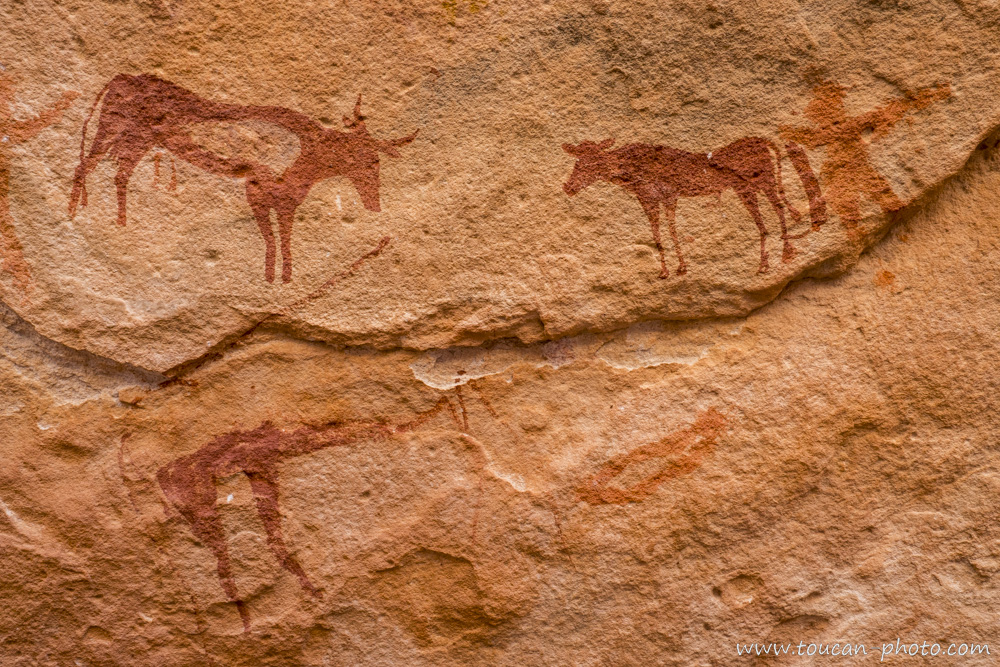 Old rock paintings realized in a very pared down style
Old rock paintings realized in a very pared down style
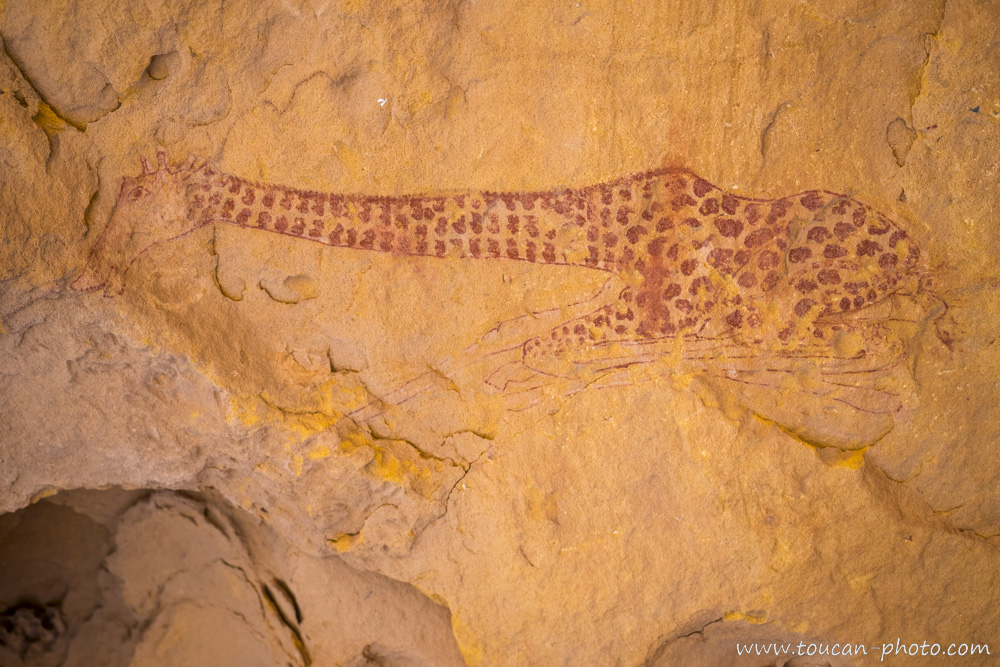 More complex rock painting. Depending of the eras, different technics and styles succeeded one another.
More complex rock painting. Depending of the eras, different technics and styles succeeded one another.
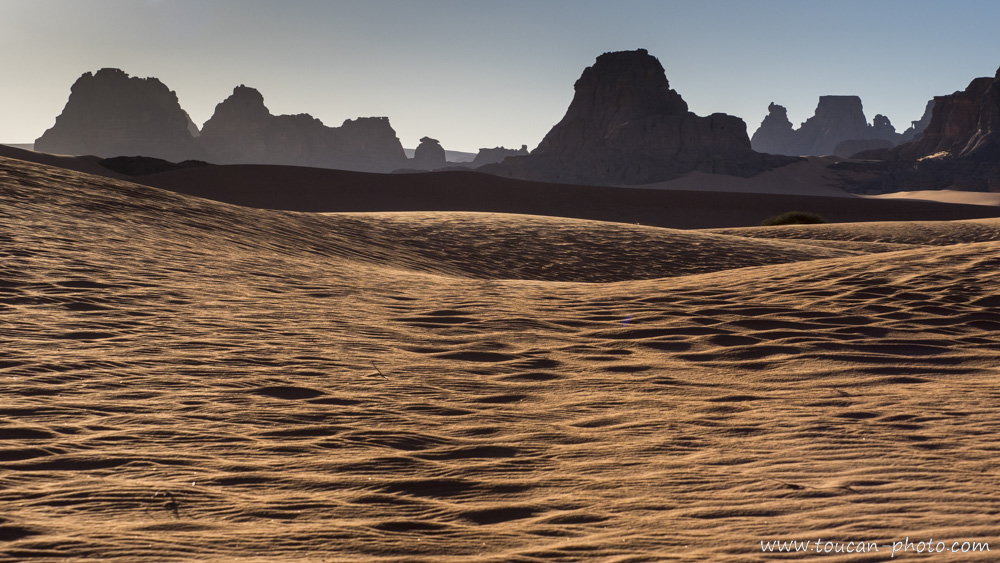 Sand and Rock
Sand and Rock
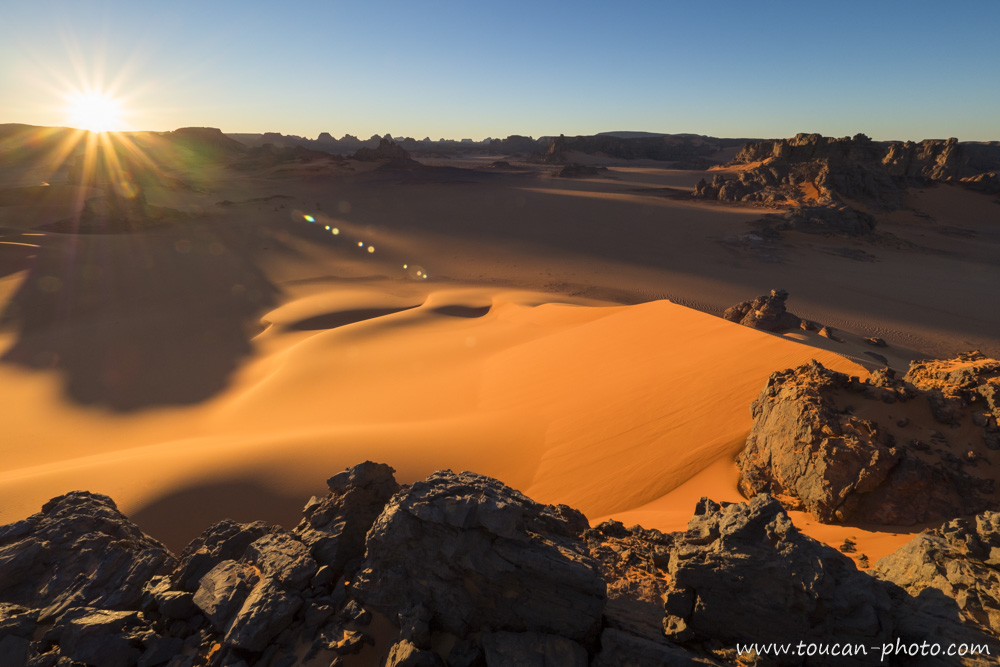 Tadrart Rouge’s sunset
Tadrart Rouge’s sunset
To sea more picture from Sahara:
ALl the pics from the Sahara desert
To learn more about the Sahara:
Sahara on Wikipedia (EN)
To learn more about the Tadrart Rouge:
Tadrart Rouge on Wikipedia (EN)
To learn more about the saharian Rock art:
Article sur Clio.fr de Yves Gauthier, Directeur de recherche au CNRS. (FR)